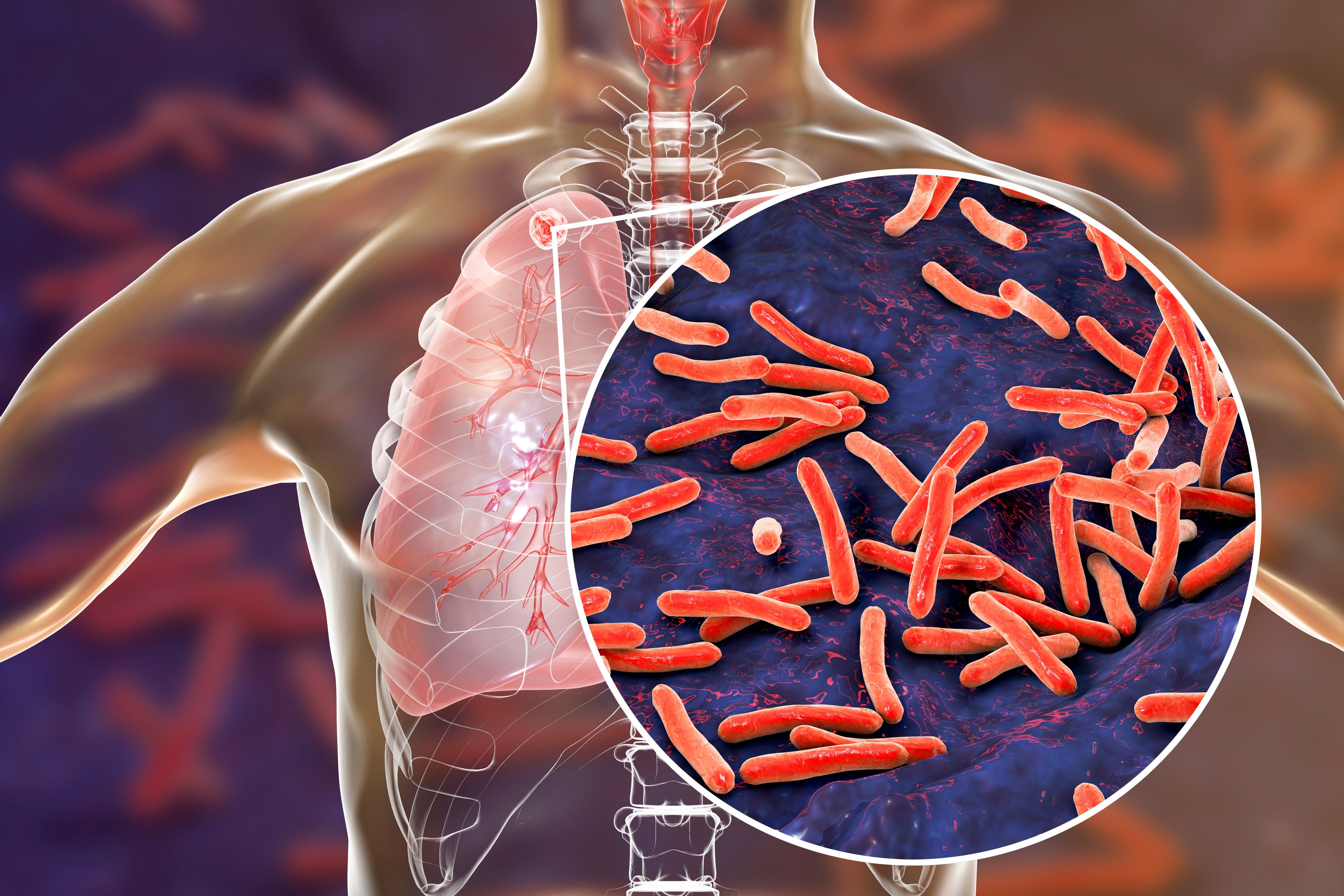TD-GC×GC–TOF-MS Non-Invasively Identifies VOCs in Skin as Tuberculosis Biomarkers
A polydimethylsiloxane (PDMS) silicone rubber band sampler was used to collect volatile organic compounds (VOCs) from the skin of both tuberculosis (TB)-positive and TB-negative subjects.
A platform combining thermal desorption with comprehensive two-dimensional gas chromatography and time-of-flight mass spectrometry (TD-GC×GC–TOF-MS) has been devised by researchers at the University of Pretoria in South Africa for determining volatile organic compounds (VOCs) in human skin and assessing their potential as biomarkers for diagnosing tuberculosis (TB) (1). The work of these authors, Portia C. K. Makhubela, Egmont R. Rohwer, and Yvette Naudé, was recently published in the Journal of Chromatography B.
Secondary tuberculosis in lungs and close-up view of Mycobacterium tuberculosis bacteria, 3D illustration | Image Credit: © Dr_Microbe - stock.adobe.com

According to the authors, TB remains a global health concern. Infection from this contagious, airborne bacterium most often results in pulmonary TB affecting the lungs (1). Blood and sputum are the most common means of detection by diagnostic tests, but producing adequate sputum, the authors said, can be difficult given a dry cough is often a TB symptom. This study proposes the use of a polydimethylsiloxane (PDMS) silicone rubber band, made in-house, as a non-invasive sampler for collecting VOCs from skin, from a mix of male and female participants—15 clinically diagnosed with TB, and 23 TB-negative.
Building on previous studies that had revealed compounds reported for TB from biofluids, the authors said their method identified 27 of those compounds in the skin samples, plus another 16 potential biomarkers that were previously unreported (1). An artificial neural network (ANN) multilayered perceptron, according to the research, identified 1H-indene, 2,3 dihydro-1,1,3-trimethyl-3-phenyl and heptane-3-ethyl-2-methyl as the two most discriminatory compounds overall, and 3-methylhexane as the most discriminatory between those who were TB-positive and TB-negative in the study.
In evaluating their hypothesis, the authors said the combination of a non-invasive skin test combined with the TD-GC×GC–TOF-MS platform performed favorably to other diagnostic methods including electronic nose and breath analysis, demonstrating that skin VOCs can distinguish between individuals with tuberculosis and without (1). For further investigation, the researchers recommended expanding the study cohort from the 38 people involved in this report, as well as confirming the identity of biomarkers with advanced techniques such as high-resolution mass spectrometry (HRMS).
Reference
(1) Makhubela, P. C. K.; Rohwer, E. R.; Naudé, Y. Detection of Tuberculosis-Associated Compounds from Human Skin by GC×GC–TOF-MS. J. Chromatogr. B 2023, 1231, 123937. DOI: 10.1016/j.jchromb.2023.123937
TD-GC–MS and IDMS Sample Prep for CRM to Quantify Decabromodiphenyl Ether in Polystyrene Matrix
April 26th 2024At issue in this study was the certified value of decabromodiphenyl ether (BDE 209) in a polystyrene matrix CRM relative to its regulated value in the EU Restriction of Hazardous Substances Directive.
LC–MS/MS-Based System Used to Profile Ceramide Reactions to Diseases
April 26th 2024Scientists from the University of Córdoba in Córdoba, Spain recently used liquid chromatography–tandem mass spectrometry (LC–MS/MS) to comprehensively profile human ceramides to determine their reactions to diseases.
High-Throughput 4D TIMS Method Accelerates Lipidomics Analysis
April 25th 2024Ultrahigh-pressure liquid chromatography coupled to high-resolution mass spectrometry (UHPLC-HRMS) had been previously proposed for untargeted lipidomics analysis, but this updated approach was reported by the authors to reduce run time to 4 min.